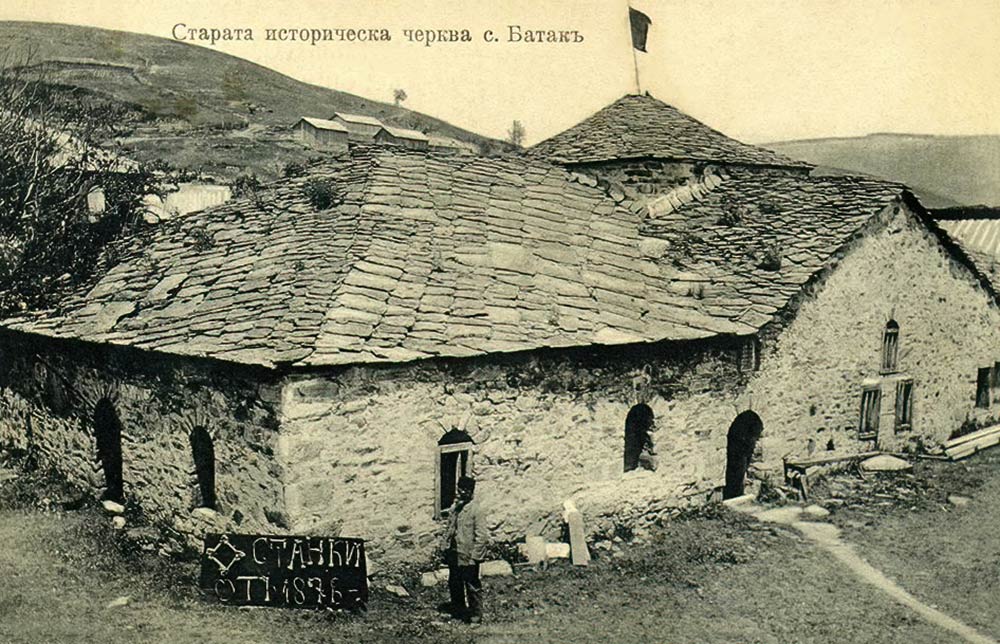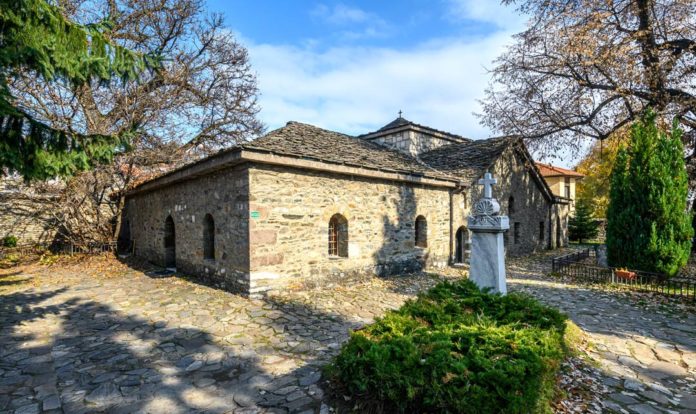A Peaceful Facade with a Turbulent Soul
In the heart of the quiet Rhodope village of Batak, nestled amid pine-covered hills and surrounded by serene beauty, stands a small stone church. Modest in size and appearance, the Church of St. Nedelya doesn’t announce its importance — but behind its simple walls lies one of the most powerful and harrowing stories in Bulgarian history.
For travelers drawn to places where faith, resistance, and memory meet, St. Nedelya Church is not just another landmark — it’s a place that will stay with you long after you leave.
Built with Devotion: A Church for the People
The Church of St. Nedelya (Света Неделя) was constructed in 1813 by the local Christian community of Batak during the final century of Ottoman rule over Bulgaria. Built using local stone and wood, the church was relatively small, following the traditional Bulgarian Orthodox architectural style of the period — sunken into the ground to avoid Ottoman restrictions against Christians building tall churches.
Despite its modest structure, the church was a vital center of spiritual life in Batak for decades. It hosted baptisms, weddings, and liturgies that bound the community together through difficult times.
1876: A Church Becomes a Fortress

The quiet church would become the stage for one of the most brutal massacres in the Balkans during the April Uprising of 1876 — a rebellion launched by Bulgarians against the centuries-long Ottoman domination.
In May 1876, as Ottoman forces and bashi-bazouks (irregular troops) moved to crush the rebellion, the people of Batak — civilians, clergy, and rebels alike — sought refuge in the stone walls of St. Nedelya. Over 2,000 men, women, and children crammed into the tiny space, hoping for mercy or protection.
But mercy never came.
For three agonizing days, Ottoman forces laid siege to the church. When they finally broke in, they massacred nearly everyone inside. The church floor ran red with blood. Mothers were killed shielding their children. The priest, Father Paisiy, was slain at the altar. The building was left littered with corpses.
Eyewitnesses later described the horror. The stench of death remained for weeks. European correspondents, including American journalist Januarius MacGahan, reported on the massacre, causing an international outcry and a shift in global opinion about the Ottoman Empire’s treatment of the Bulgarians.
A Martyr’s Sanctuary Turned National Shrine
After Bulgaria’s liberation in 1878, the church was preserved exactly as it stood — a memorial site, not just a religious one. The bones of some of the victims were left in glass reliquaries inside the church, and the bullet-scarred walls and altar were untouched, turning the structure into a living museum of sacrifice.
In 1976, during the centennial of the April Uprising, St. Nedelya Church was officially declared a national historical monument.
Today, the church functions both as:
- A sacred place of prayer and remembrance
- A museum, operated by the Batak Historical Museum
What to Expect When You Visit
Visiting the church is not a light experience. The moment you enter the dim interior, the air seems thicker. You walk on the same floor where people made their final stand. The bones and skulls of the victims lie preserved in cases — not to frighten, but to testify.
The iconostasis, riddled with holes and slashes, still holds faded icons. The frescoes are darkened, not from age alone but from the smoke of candles and bloodied history.
Outside, the grounds are quiet — only the whisper of wind in the trees and the sound of your breath.
Batak Today: A Town That Remembers
Modern Batak is a peaceful mountain town — a destination for eco-tourism, skiing, and lake retreats. But locals still carry the legacy of 1876 in their hearts. The church is the spiritual nucleus of Batak, especially during commemorations each May, when Bulgaria marks the uprising and honors the martyrs.
You may even witness villagers lighting candles, leaving flowers, or whispering prayers in gratitude. Not for victory — but for memory.
Silence Speaks Here
St. Nedelya Church isn’t ornate or monumental. It won’t dazzle you with gold or mosaics. But what it offers is deeper — an intimate, solemn connection to a nation’s fight for dignity and freedom.
When you visit Batak, don’t just take a photo. Pause. Sit on the stone steps. Listen to the silence. It has stories to tell.
Tip: Pair your visit with a stop at Snezhanka Cave. Alternatively, you can also explore the Peristera Fortress.



